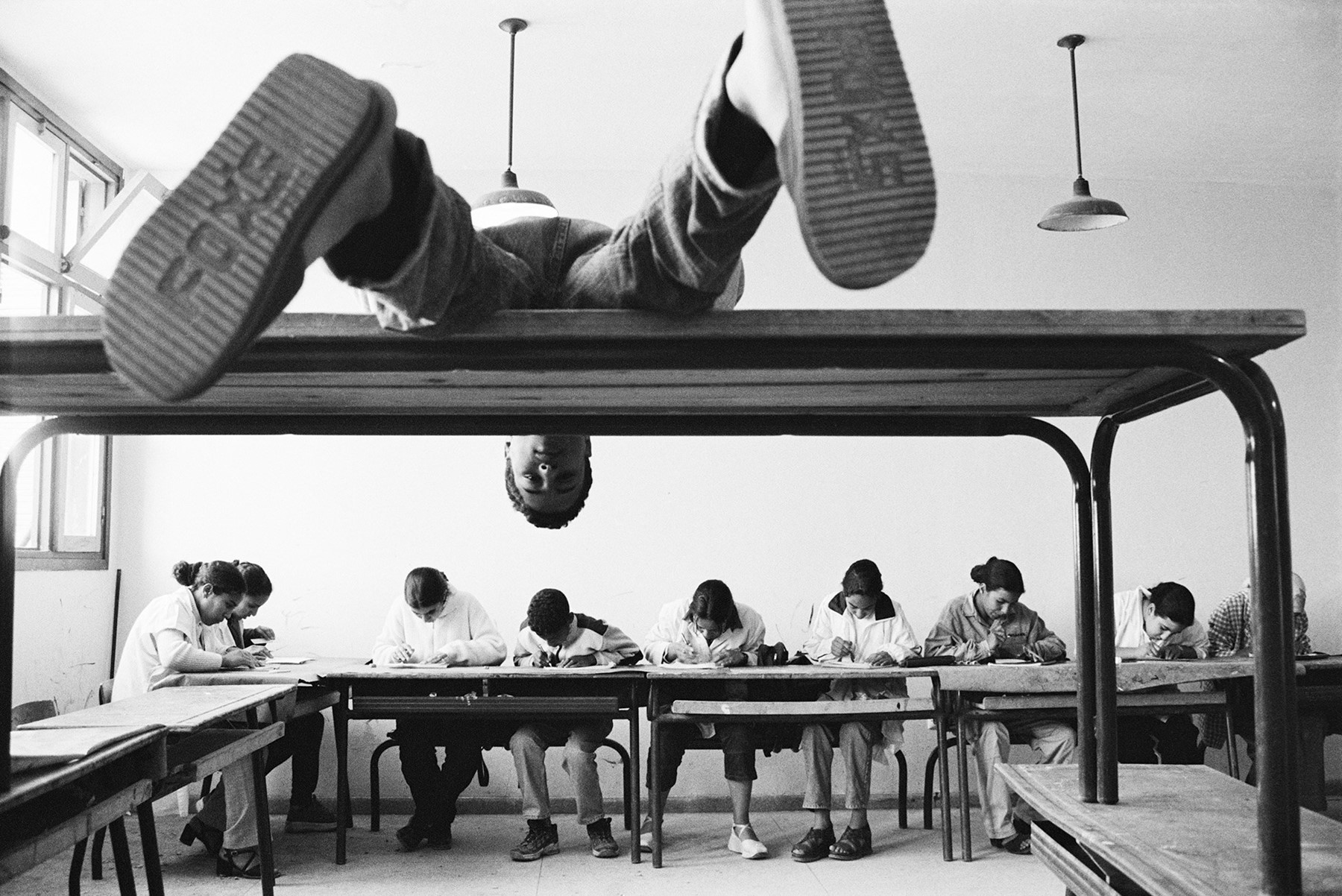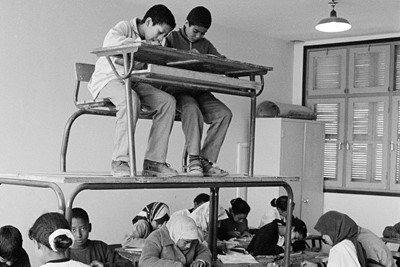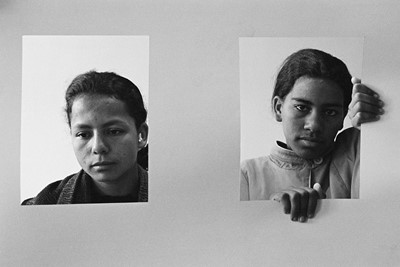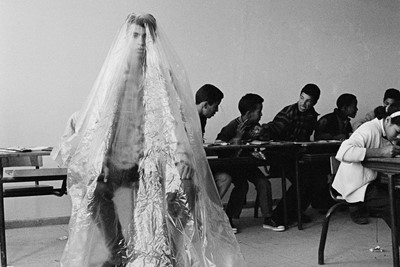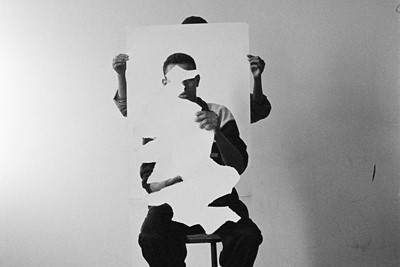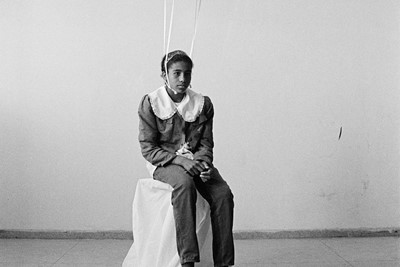Created over nine years, Hicham Benohoud’s surreal new photo book The Classroom acts as a complex metaphor for Moroccan society
Most of us view the classroom as a familiar space where our initial years of identity formation and socialising played out. It’s where we began to make sense of the world; a site of knowledge, which, as the old adage suggests, is power, but paradoxically also a site of control. It is this notion of control that Lewis Chaplin and Sarah Chaplin, the publishers behind Loose Joints, want to acknowledge in a new photo book dedicated to Morrocan artist Hicham Benohoud’s The Classroom. Published this month, the book comprises Benohoud’s monochrome photographs of his students in a classroom curated from around 1,000 contact sheet images taken between 1994 and 2002.
Conceptualised during his time as an art teacher in Marrakech, the series was foregrounded by a sense of boredom and necessity for Benohoud, who started by making portraits of his students to use as reference photographs for his practice as a visual artist. “I began reproducing images from fashion magazines daily. However, I wasn’t satisfied with the quality of these images, which led me to create my own references. That’s when I thought of making portraits of my students, using strong chiaroscuro lighting and tight framing,” Benohoud says, noting the dearth of museums in Morocco where he could go to copy from the Old Masters and improve his technical skills. The artist soon realised that the photographic medium had creative potential beyond replicating an image, pushing him to take a more playful approach to capturing his students.
A far cry from the formal elements of a reference image or the sanitised photograph you would find on school brochures or yearbook photographs, the photographs in Benohoud’s series are visually striking, deliberated staged and almost surreal in their execution. In this series, the classroom takes on the same transformative potential of a photo studio where the infinite possibilities of a space can be conjured through prop and performance. “The photo sessions became a moment of creation, a time to let my imagination run free. It felt as if time was suspended, a moment both joyful and serious,” Benohoud shares.
Over the nine years Benohoud worked on this series, the artist explained how the style of the photographs evolved from an almost austere setting, which included “only the main subject and the person holding the paper or fabric backdrop,” to incorporating various materials from his art lessons, such as clay, plaster, and rolls of paper. In some photographs, the subject handles the prop, such as when Benohoud’s student stands on his desk with a hula-hoop over his shoulder while his peers appear to work away diligently. In others, students are shrouded in plastic or wrapped around with a long string of paper, signifying a sense of suffocation. “At first, I arranged these elements myself without involving my students. For instance, I stretched strips of adhesive tape from the walls to the floor, creating a cage-like or prison-like structure”, Benohoud explains. “Everything in this work is a metaphor revolving around the theme of confinement. I symbolised this with barbed wire or strips of paper wrapped around bodies. The classroom itself became a metaphor for Moroccan society, where one suffocates under the weight of traditions.”
This aspect of Benohoud’s photography prompted the publishers to include an excerpt from Michel Foucault’s 1975 book Discipline and Punish, which Loose Joints publisher Lewis Chaplin noted “is fundamental to understanding how bodies are controlled and manipulated in space, including in the rigid order of the classroom”. Alongside using these objects as a visual representation of a repressive educational system, Benohoud’s pedagogical approach to photography and performance was a means to escape the rigid post-colonial society demarcated for himself, his students and his community. “I have always dreamed of an open society – one that questions itself and allows for expression without censorship or self-censorship,” Benhoud shares. “The objects in these photos and how they are arranged within the classroom and on the students’ bodies symbolically reflect this inescapable situation within my community.”
Inspired by The Classroom and his positionality as a Moroccan citizen, the artist continued to engage with notions of confinement and cultural rigidity in successive projects, such as Acrobatie (2017), where Benohoud photographed acrobats performing in the physically limiting space of their homes in an attempt to capture restraint. In the 31 years since the artist first developed the series, it has been exhibited internationally and is part of the collection at the Tate Modern. In its latest iteration as a photobook edited by Sarah Chaplin Espenon, the photographs are as compelling in 2025 as they were in the early 2000s. This is a stark reminder that the disciplinary confines of the classroom can and must be subverted into a space of creativity and expression.
The Classroom by Hicham Benohoud is published by Loose Joints, and is out now.
